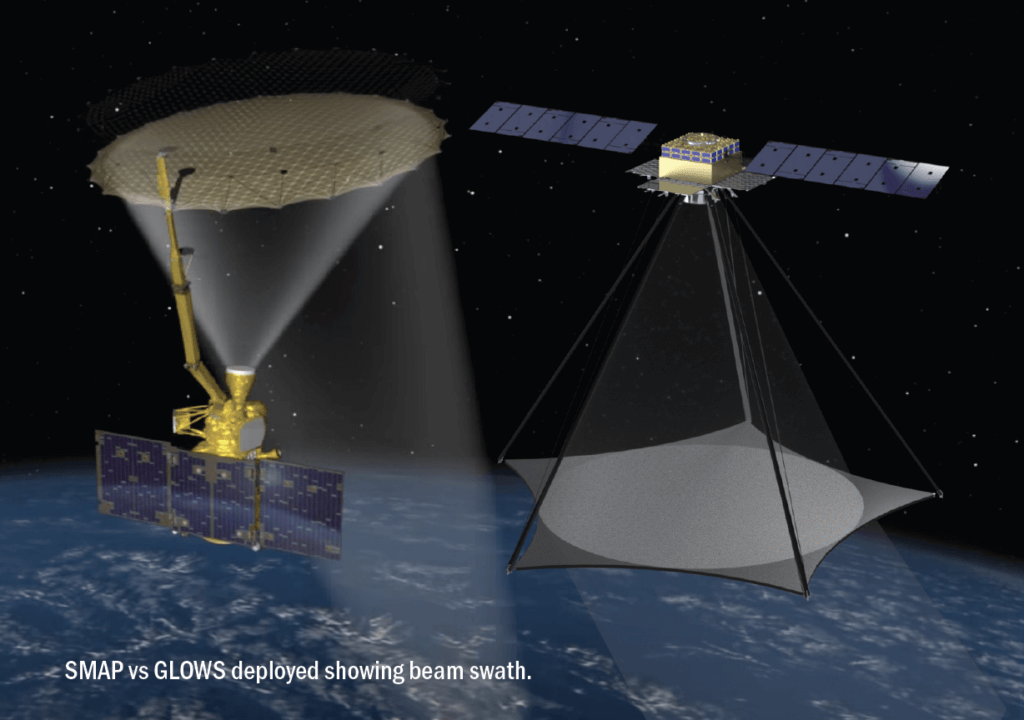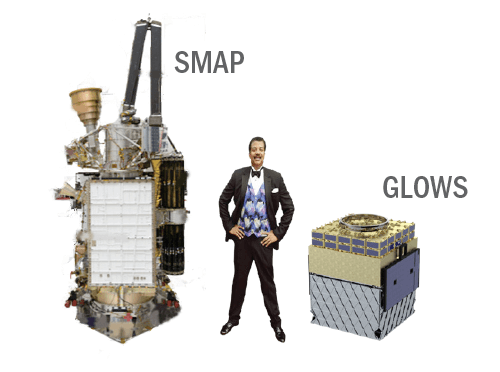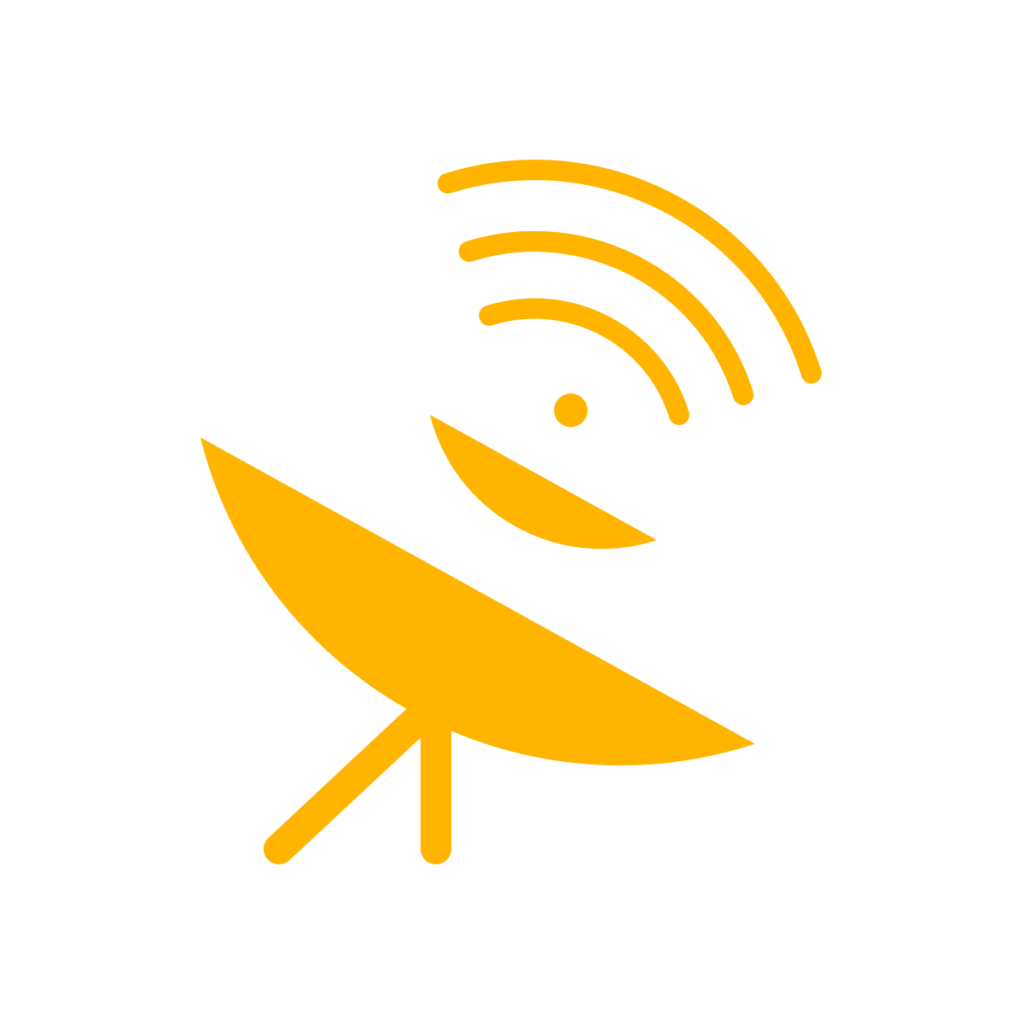Case Study: GLOWS
Global L-band Active/Passive Observatory for Water Cycle Studies (GLOWS)
Players: NASA Earth Science Technology Office (ESTO), Brigham Young University, NASA Goddard Space Flight Center, MMA Design, Agile RF Systems
The Challenge
Space has traditionally been BIG — meaning space instruments have been large, cumbersome, time-consuming and incredibly expensive, not only to develop and build, but also to launch. Between the 1990s and about 2015, however, significant progress was made in advancing small satellite platforms to support highly successful missions like those flown on Ariane 4 secondary payloads and Pegasus. These early missions proved that exceedingly capable assets could be stowed in smaller packages, and started what has become known as the SmallSat Revolution.
Simultaneously, efforts to gather accurate data about the Earth’s soil moisture became more critical as scientists sought to understand complex, changing climate dynamics. Hydrological threats such as drought, deforestation, polar ice change, and flood/ landslide risk that carry significant economic, societal, and environmental impacts were a growing reality. Critical to understanding these threats is knowing soil moisture. Soil moisture observations have been shown to be important for applications such as agricultural productivity forecasting, terrain mobility, weather, wildfire risk, and water resources. In response, The European Space Agency (ESA) launched the Soil Moisture and Ocean Salinity (SMOS) satellite in 2009 and NASA launched the Soil Moisture Active Passive (SMAP) mission in 2015 to gather data and track long-term patterns of soil moisture variability and the evolution of terrestrial hydrological trends. These satellites provide extremely valuable data, but are large, complex, and costly.
Earth’s water cycle, like the climate, is a complex and complicated system that requires long-term observation. The SMOS and SMAP data set constitute a mere “snapshot” of the global changes. Long-term solutions to provide affordable sources of this data going forward with more frequent collection are essential to help us better understand and anticipate how soil moisture in the hydrological cycle behaves.
The Solution
In 2018, MMA teamed up with Dr. David Long of Brigham Young University and NASA Goddard Space Flight Center to develop a new, lower cost, next generation soil moisture measurement instrument to ensure the practicality of this long-term data continuity.

MMA team poses after deployment testing the GLOWS prototype in the MMA test lab.
The Global L-band Active/Passive Observatory for Water Cycle Studies (GLOWS) program will recreate SMAP-like capability and shares many of its mission characteristics:
- The GLOWS radar (active) and radiometer (passive) channels share a common 6-meter aperture.
- GLOWS employs the same L-band frequencies for both active/passive as SMAP.
- GLOWS shares the same orbit as SMAP and the same on-orbit calibration plans/maneuvers planning.
- Like SMAP, GLOWS rotates its antenna at 14.6 rpm to create a wide swath pattern on Earth.
- The GLOWS radiometer operates at the same incidence angle and resolution as SMAP.
- The GLOWS radar provides a wider swath than SMAP.

GLOWS’ key innovations enable the capture and study of this critical data but at a fraction of the mass, volume and cost of previous instruments. For example, using a lens antenna made of multi-layer membrane significantly reduces the complexity and rotary inertia compared to the mesh reflector used by SMAP. Furthermore, instead of the large L-band feed horn, GLOWS uses a low-profile array. Leveraging recent advances in commercial space radar systems to avoid an all-custom radar design and the use of commercial ground stations further reduces costs. These innovations enable the use of a much smaller spacecraft than previous sensors, with a large savings in launch costs.

SMAP vs GLOWS stowed. (Neil deGrasse Tyson shown for scale.)
The Results
Stowing within a rideshare volume, GLOWS ensures scientists can continue to do the same big science, at a fraction of the cost of previous missions.






